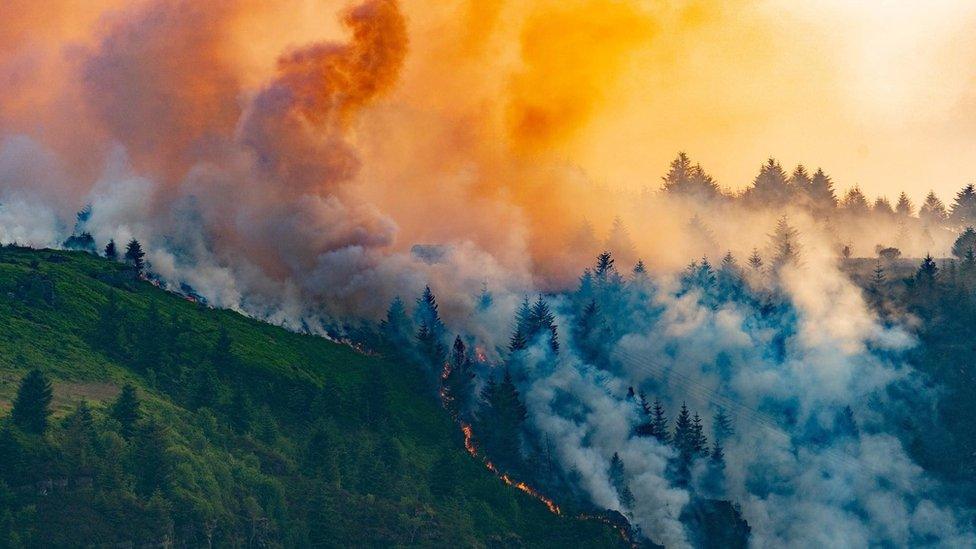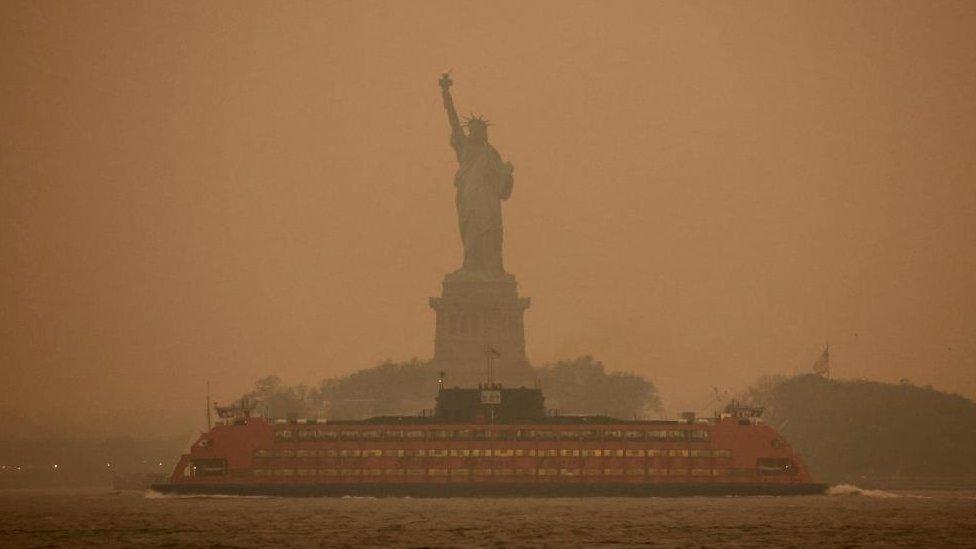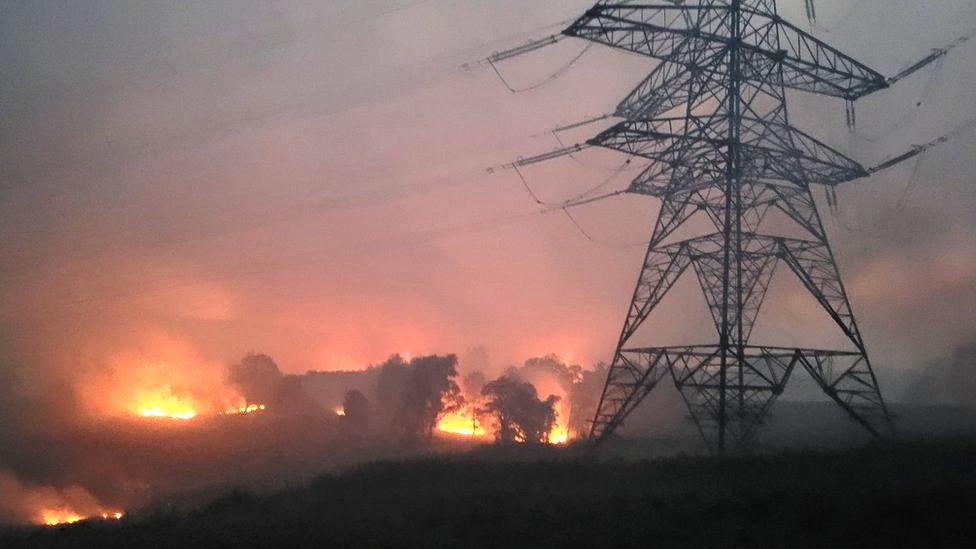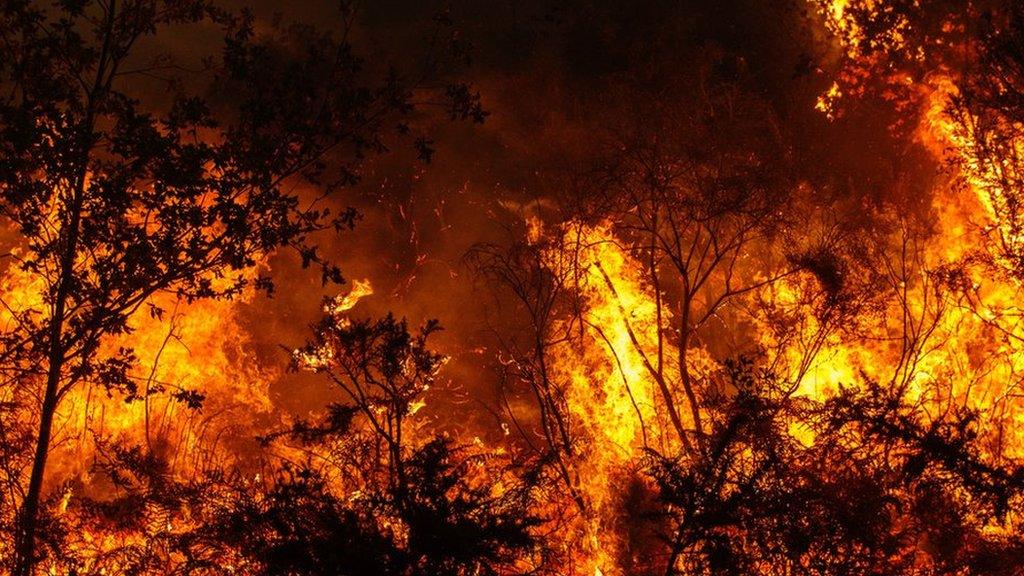Firefighters tackling large wildfires in south Wales
- Published
- comments
Helicopter footage shows large wildfire being fought on Rhigos mountain
Fire crews have been battling wildfires across south Wales, one of which has affected an area of 100 hectares - as big as 140 football pitches.
The fires broke out at at Tir-Phil in New Tredegar, Pantside near Newbridge, Blaengarw, Rhigos mountain, Nantyffyllon and Pontycymer on Wednesday afternoon.
The at the Rhigos Mountain started on Friday, and reignited on Tuesday with repeated attempts to fully put out the flames failing.
The Mountain Pass road that connects the Rhondda and Cynon Valley remained closed for most of Wednesday, due to the danger from the blaze.
Flames have also been spotted close to the site of popular tourist attraction Zip World Tower and the site has been temporarily closed, although it is not thought to have been damaged by the fire.
On its Facebook page Zip World Tower said "one of our Phoenix zip lines (Alpha line) at the Zip World Tower site has been closed due to its access road being shut.
"Other attractions at the site including Phoenix Bravo line, Tower Coaster, Tower Climber and Tower Flyer are unaffected and currently remain open."
Fire crews also a faced a number of wildfires in the Valleys last weekend, with parts of the Skyline Mountain Bike Trail in the area being closed as a precaution.

The blaze began on 9 June and reignited on Tuesday
Specialist equipment including fire beaters and a helicopter have been used to help manage the fire, and firefighters created fire breaks to try and stop the flames from spreading further.
They have also been using fire to fight fire - lighting a controlled burn to box in the main fire and stop it spreading.
This is a common tactic in the Canada and California, but it has not often been used in the UK.
Although the cause of the fires hasn't yet been confirmed, but they began during a heatwave in Wales, and other parts of the country.
South Wales Fire and Rescue Service added that its staff are facing "dangerous and challenging conditions" and have been "inundated" with wildfire calls in recent weeks.
These fires put significant pressure on our operational resources, as well as posing a risk to life, property and the environment.
A spokesperson said: "Crews have been working tirelessly across our service area to manage and prevent wildfires from spreading and causing further damage and disruption to our communities.
"As the summer months and dry conditions persist, it is crucial that members of the public are aware of the associated dangers and take the necessary precautions to prevent wildfires."
Craig Hope, wildfires tactical advisor at South Wales Fire and Rescue Service said that "fire engines can't be in two places at once" and "there is a strain resources".
From 1 April to 11 June 2023, the service said it had has responded to almost 400 deliberate grass and wildfires that have destroyed natural habitats and caused significant damage.
National weather service the Met Office has said the risk of wildfires has been raised to 'very high' for large parts of England and parts of Wales.
Much of England has been upgraded to the second highest category, along with some parts of north and south Wales.
This is because the current heatwave and lack of rain are likely to make the landscape more at risk to wildfires breaking out.
An extreme wildfire warning is already in place in northeast Scotland, with a large fire breaking out near Iverness on Saturday.
- Published9 June 2023

- Published1 June 2023

- Published24 February 2022

